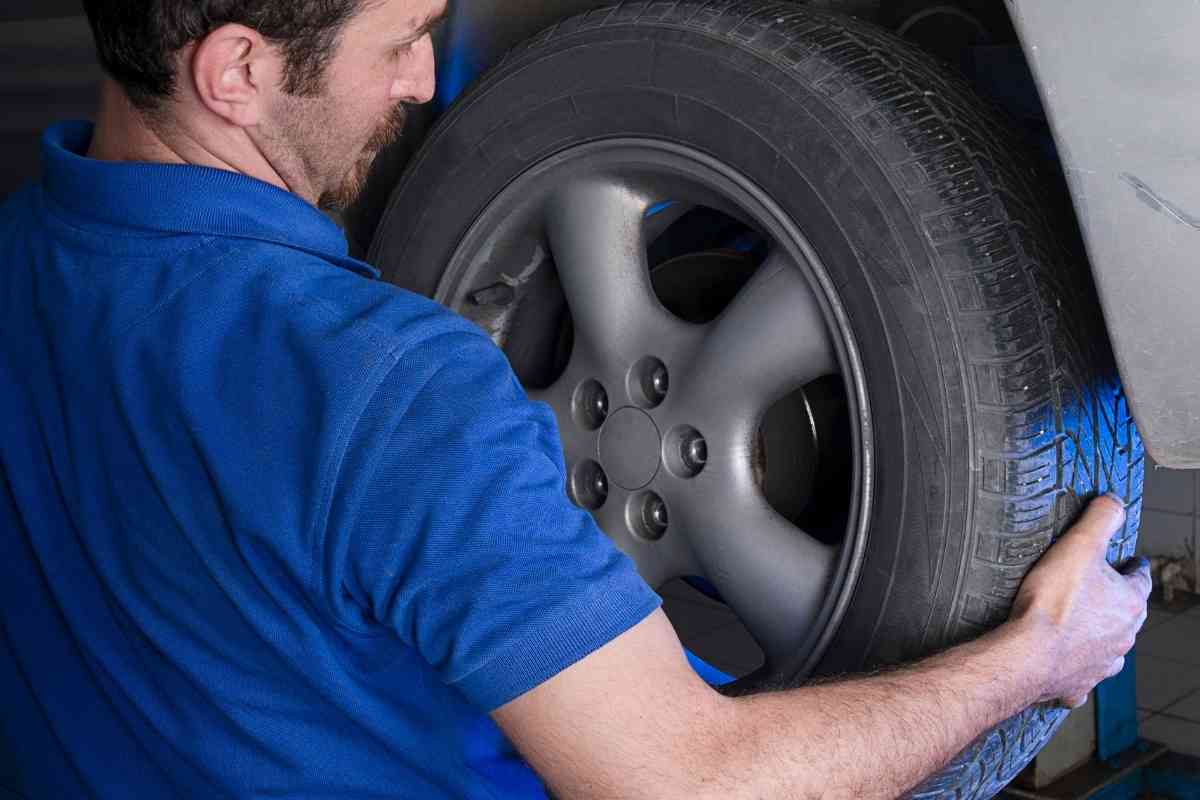Does Discount Tire Fix Flats For Free? Ultimate Repair Guide
If you have seen a Discount Tire in your area, you might be wondering if Discount Tire will fix flats for free. It is important to know where you can go to have a flat tire fixed should you ever encounter a problem and need to have a flat fixed immediately.

Will Discount Tire fix a flat tire for free?
Discount Tire will fix flat tires for free, and this applies to customers and non-customers. Discount Tire has specific guidelines that they follow to determine if a tire is eligible for repair or if it will need replacement.
Getting a flat tire can be scary, so it is a good idea to know where you can go to have your tire inspected and repaired or replaced. Discount Tire has locations all across the United States and is a reliable place to go if you do end up with a flat.
The information in this guide has been provided by Discount Tire as well as experts within the auto industry to ensure the information is accurate and up to date.
Discount Tire Overview
What Is Discount Tire?
Discount Tire is an independent tire shop and wheel retail store. They are a large chain and operate in almost all lower 48 states within the United States, which makes them a popular go-to for any tire and wheel needs.
They are headquartered in Scottsdale, Arizona, but were originally founded in 1960 in Ann Arbor, Michigan. The company was founded by Bruce T. Halle, and when he began, he only had six tires available, 2 of which were new and 4 were retreads.
The company continued to grow, and by September 20, 2018, the company opened its 1,000th store. It is now known as the largest retailer of tires and wheels in the world.
The company has put a large focus on customer service, providing prices that are reasonable, and having a satisfaction guarantee. They provide other services too, like tire rotation and warranties as well as the expertise of a Discount Tire mechanic.
Does Discount Tire Fix Flats for Free?
Discount Tire does offer tire repair and will fix a flat tire for free regardless if you are a customer or a non-customer.
If you have a flat tire or other tire failure and are near a Discount Tire, you can go to any Discount Tire location and they will do a free tire inspection to figure out where the leak or puncture is and if it can be patched or if you will need a new tire.
Discount Tire checks the damage to the tire against their own guidelines as well as the United States Tire Manufacturer Association to ensure that they give you the best resolution. Tires cannot always be repaired, so a thorough inspection is necessary to determine the safest option.
Tire Repair Guidelines
When Discount Tire gets your vehicle in with a flat tire, they will first remove the tire and wheel so it can be thoroughly examined. It is hard to closely examine a flat tire when it is still mounted on your vehicle.
A tire is repairable only if the damage is within the tire tread lines. If the damage is in the shoulder or sidewall area, then the tire will need to be replaced. Discount Tire can help you get new tries installed quickly, though.
Discount Tire states that the damage must be at least ½ inch away from the edge of the tire tread in order to be considered safe to repair. If it is any closer to the edge of the tire tread, then they will deem that it needs to be replaced entirely.
The tire puncture must also be no greater than ¼ inch in order for it to safely be replaced. If the tire puncture is any more than ¼ inch, then the entire tire will need to be replaced at that time.
Discount Tire has these guidelines that they follow in order to ensure that your safety is top priority. If a tire is repaired, that should have been replaced, it can pose a danger to you and everyone else on the road, so it is important to have the tire properly checked.

Types of Tire Repair
When it comes to repairing a damaged tire, you have probably heard of a tire plug and a tire patch. These are the two ways that any tire repair shop will repair your damaged tire.
There are some differences between the two and situations where one might be better than the other.
Tire Plug
Tire plugs are typically a piece of rubber that is pushed into the puncture hole from the outside of the tire to plug it.
A tire plug is not used as often as a tire patch is. Tire plugs can be more expensive and should only be used in certain circumstances.
Tire plugs cannot be used if the puncture did not go straight into the tire. If the puncture was at an angle, then a tire patch is going to be the better solution. A tire also cannot be plugged if it does not have enough tread.
Tire Patch
The most common way to repair a tire that has a puncture is with a tire patch. A tire patch is a piece of rubber that has a sticky side and will be placed over the puncture to ensure that the tire is sealed and no more air will leak.
A tire patch should allow you to continue to drive on that tire for several thousand more miles without issue as long as it is repaired properly.
What Causes A Flat Tire?
Flat tires are very common for a wide variety of reasons. Some of the causes of a flat tire will mean that the tire is able to be repaired and others will require full replacement of the damaged tire.
Puncture
A puncture can be caused by any sharp object that you may run over. This includes nails, glass, or sharp wood. If the tire is punctured by a sharp object, it can sometimes be repaired depending upon where the damage occurred on the tire.
Punctures can occur anywhere on the tire from directly on the tread to all the way on the sidewall and can enter the tire straight on or from an angle.
Damage to Valve Stem
The valve stem on your tire is the protruding part of the tire that you unscrew the cap to let air out or fill up your tire. If the valve stem is bent or corroded, it can cause air to leak from this area. In these instances, you will more than likely need to replace your tire.
Poor Road Conditions
Areas that have construction or potholes can wreak havoc on your tires. Uneven road conditions or hitting a pothole at high speed can actually pop your tire entirely.
Changes in Temperature
If the area in which you live has recently had a drastic change in temperature, you may notice your tire pressure light come on.
Air expands when warm and shrinks when cold. You will typically only see your tire pressure come on if the air temperature has gotten significantly colder recently. However, people do experience blowouts if the roads are extremely hot.
